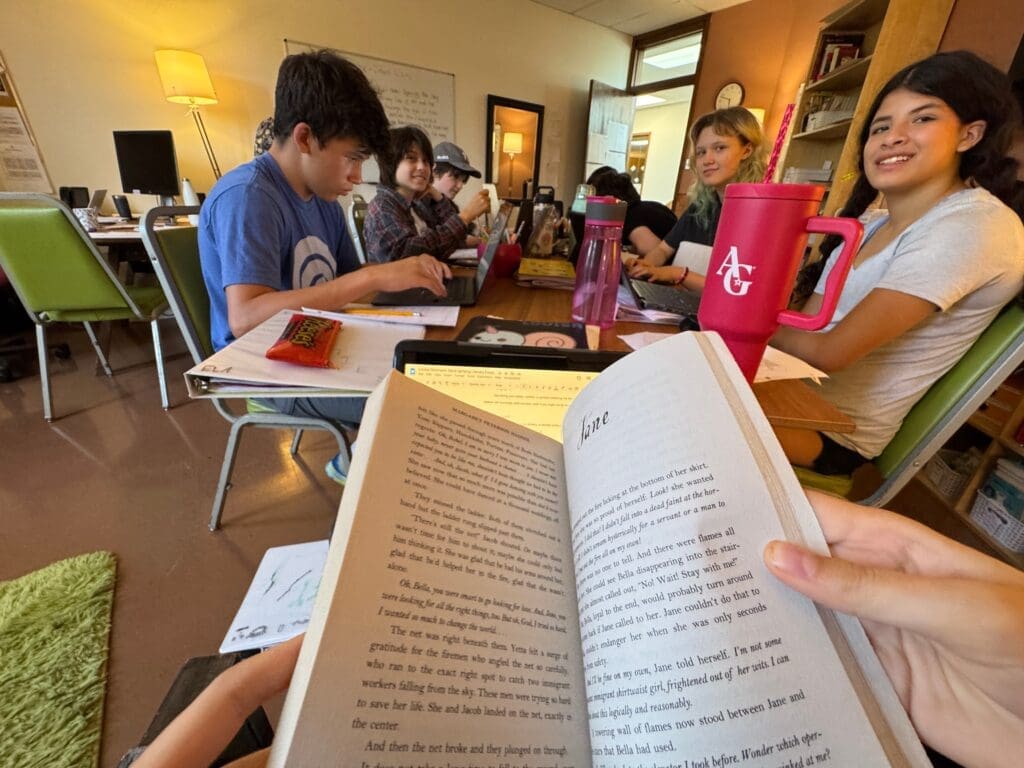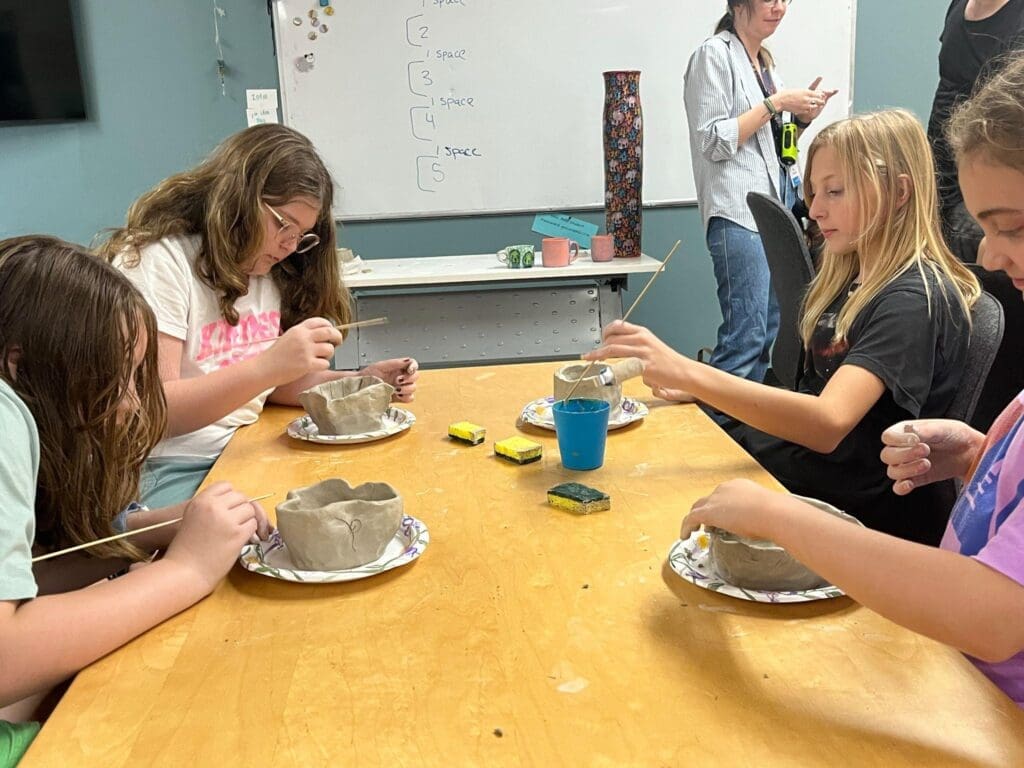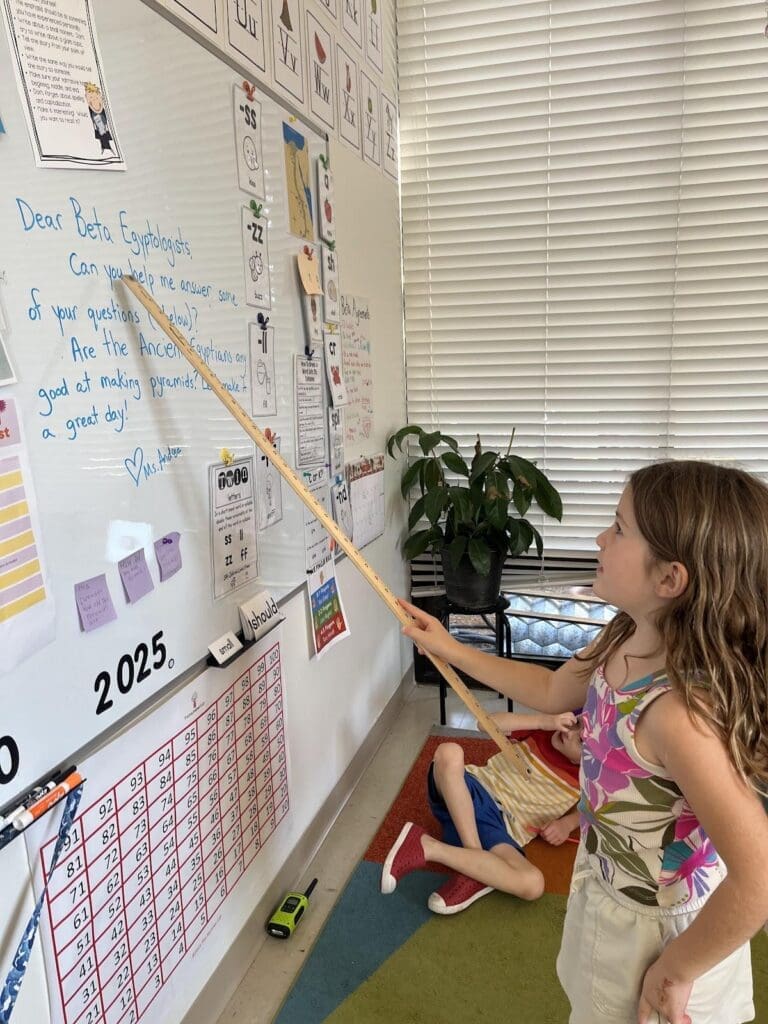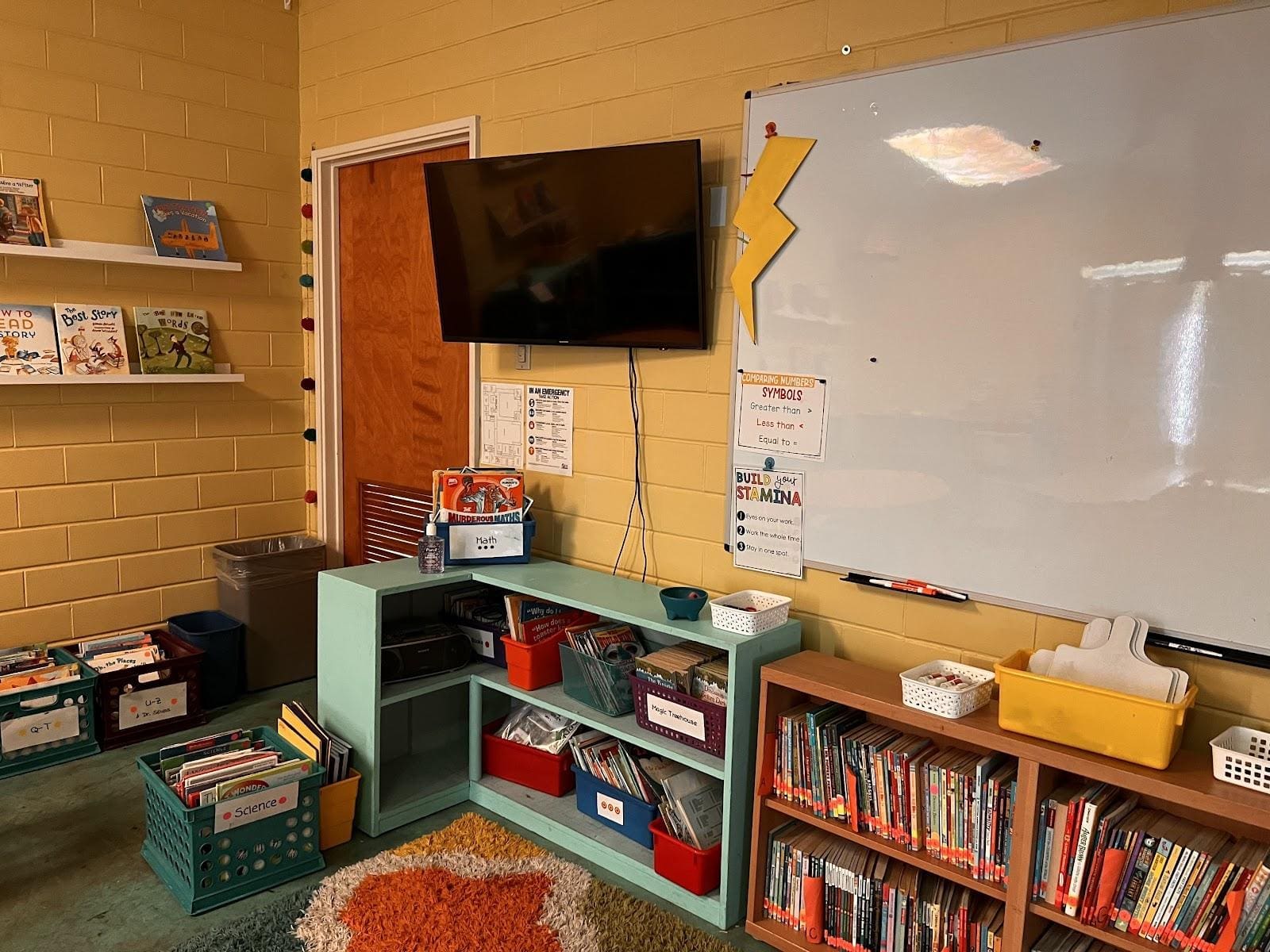
HUGE shout out and thank you to Uncle Brock (Finley and Paxton’s uncle) for hanging our TV! It is no easy feat getting through the concrete blocks!!!
Math –
Ms. Andrea’s math group worked on ordering numbers and reviewed greater than/less than this week. First we looked at a number line and used clues to determine missing numbers. Next, we each got a couple pieces of a number line to complete and worked together to assemble them like a long puzzle.
We also built the tallest ice cream cone in history! To do this we ordered numbers and checked our work by reciting the evens, then odd numbered scoops. We played several math games, mostly relating ordering numbers, into the thousands.
Next we practiced using the greater than/less than symbols to compare numbers and learned a new game: Mystery Number. After several rounds our questioning (“Is it greater than/less than?”) became more strategic and we were able to figure out the mystery number with fewer guesses. Our fun continued with more mystery bag activities! There was lots of counting manipulatives and recording numbers in multiple ways, including using a new reference page in our math notebooks to help us correctly spell number words. The Betas were super excited to play Mystery Number with partners, and afterwards we practiced solving some math riddles.
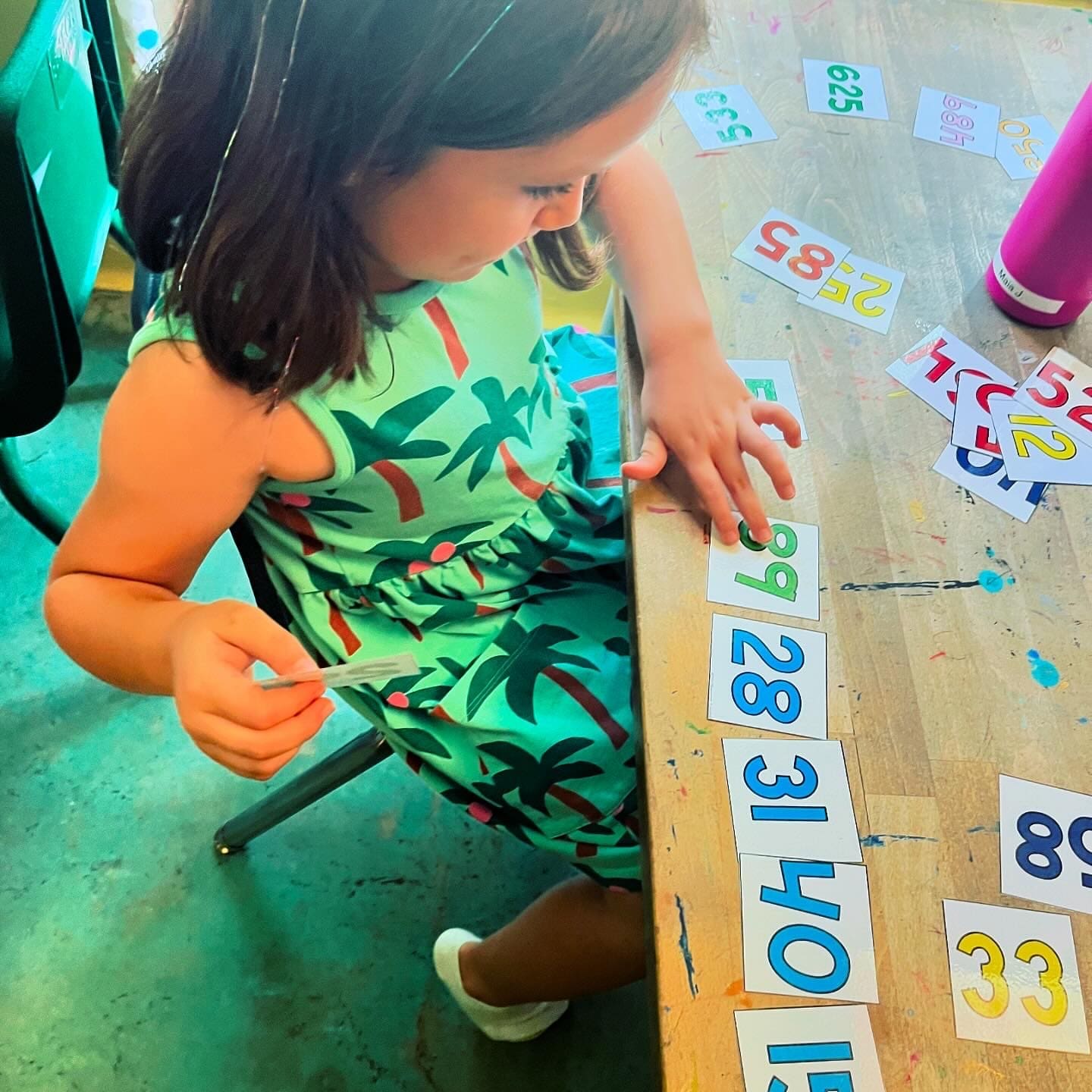 |
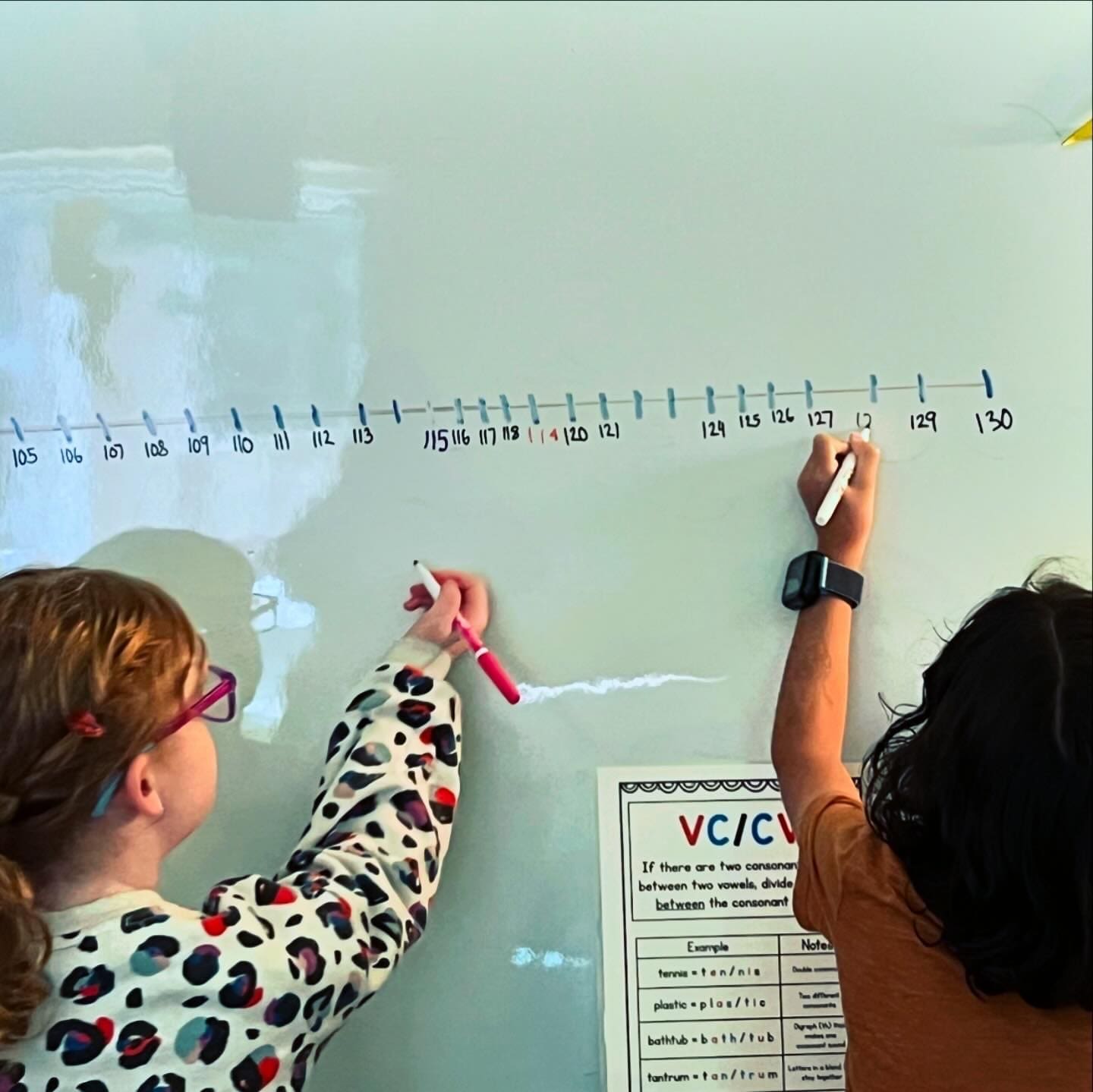 |
|---|
Ms. Kelly’s math group always warms our math brains up with a quick math challenge or two before diving into a daily 2- step word problem. We are going to be doing a LOT of these this year! 😈We learned a new game!- Place Value Yahtzee!! 🎲 And played a favorite- Digit Place! These games help us hone our place value skills in a fun and engaging way. We also worked as a team reading greater than and less than number sentences. Just like in reading words, we need to begin at the left and read our number sentences moving to the right, paying close attention to the < & > signs. Afterwards, the kids partnered up to create more number sentences by rolling a die, writing their random 6-digit numbers down and then reading the number sentences. If their number was bigger they won that round! We ♥️ place value!
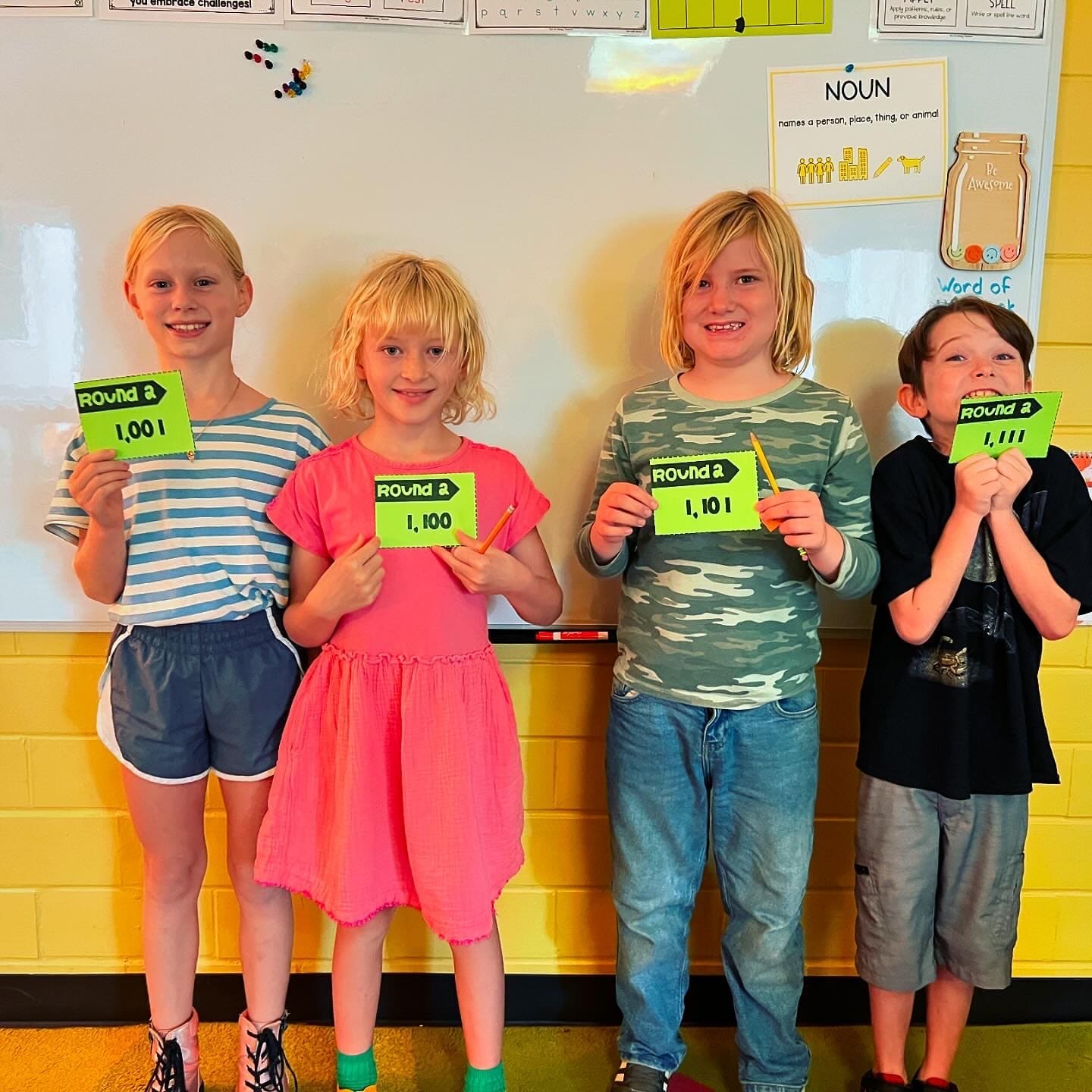 |
|---|
Reading –
Ms. Kelly’s reading group reviewed digraphs this week. A digraph is a combination of 2 letters that make one sound- like /ch/, /sh/ and the two sounds of /th/. We created words with digraphs using our letter tiles, did detective work by underlining the digraphs in a list of words and reading them, finding them in our syllabication of big words and reading short texts with, you guessed it- lots of digraphs, and of course answered comprehension questions in complete sentences.
We are also working on building a strong understanding of sentence structure. We began by studying a photo and the kiddos answered prompts like Who? Is doing? What? and Where? To help them craft a solid sentence with good detail. We used the information we gathered and created a command sentence, a question sentence and an exclamation sentence based on the picture. We also discussed the difference between fragments and complete sentences, read and found some fragments, and added the missing information to make it complete.
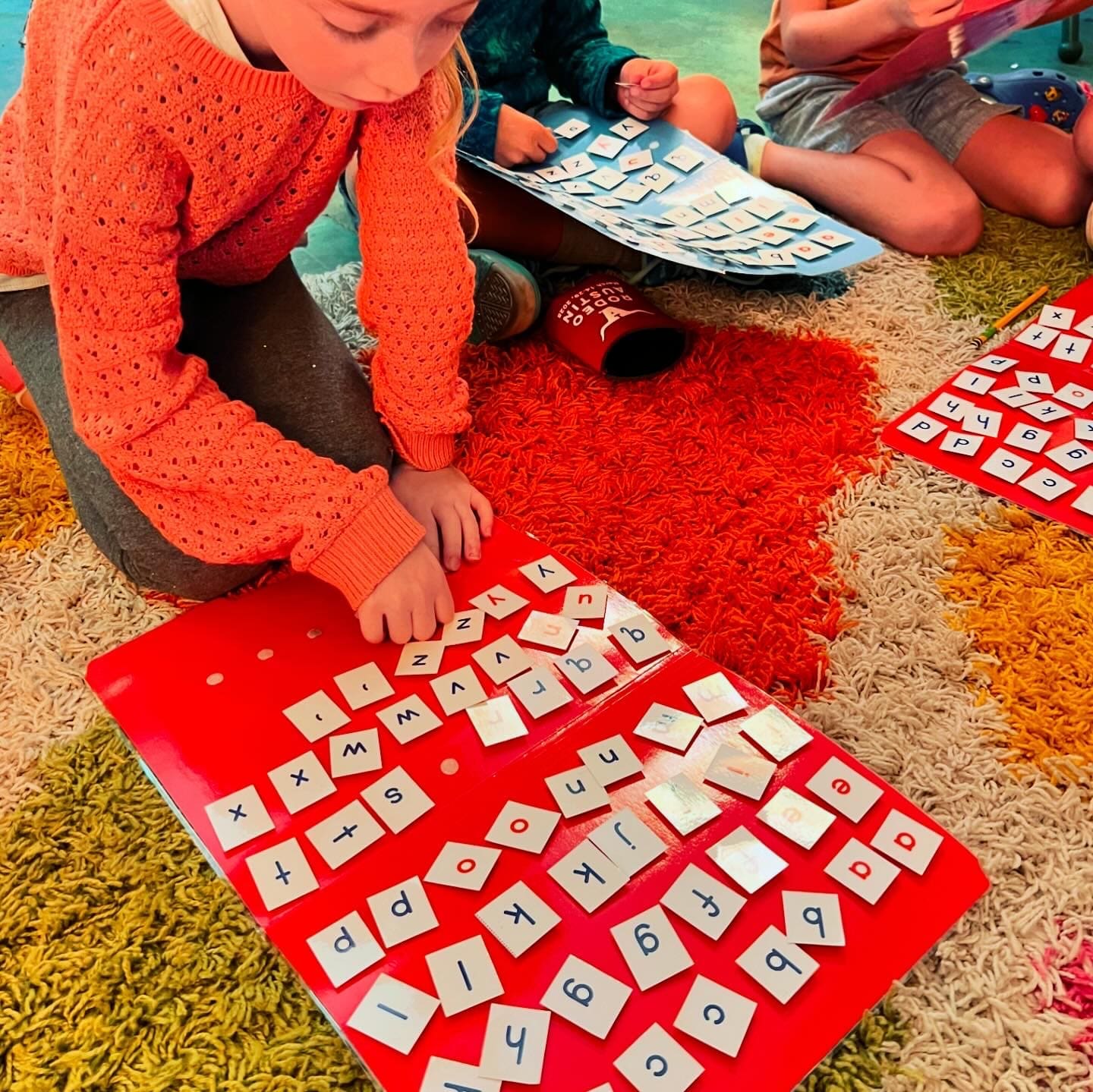 |
|---|
Ms. Andrea’s reading group reviewed vowels and consonants, as well as some common spelling patterns (CVC, CCVC, etc.). We got new partners to practice our spelling words with this week. The Betas solved several task cards relating to the spelling patterns and rocked their end-of-the-week spelling check in.
We made strides in our handwriting bootcamp – we’re nearly finished reviewing the alphabet in print, next comes cursive!
We also discussed the importance of selecting a “just right” book: one that is neither too hard nor too easy. Then we perused the class library and tried several while keeping this metacognitive task at the forefront of our focus.
Finally, we discussed the importance of recognizing an author’s purpose, in order to receive the message they’re intending. We looked at various characteristics of text and sorted them into 3 purposes: to entertain, to inform and to persuade. We found that several fit into multiple categories!
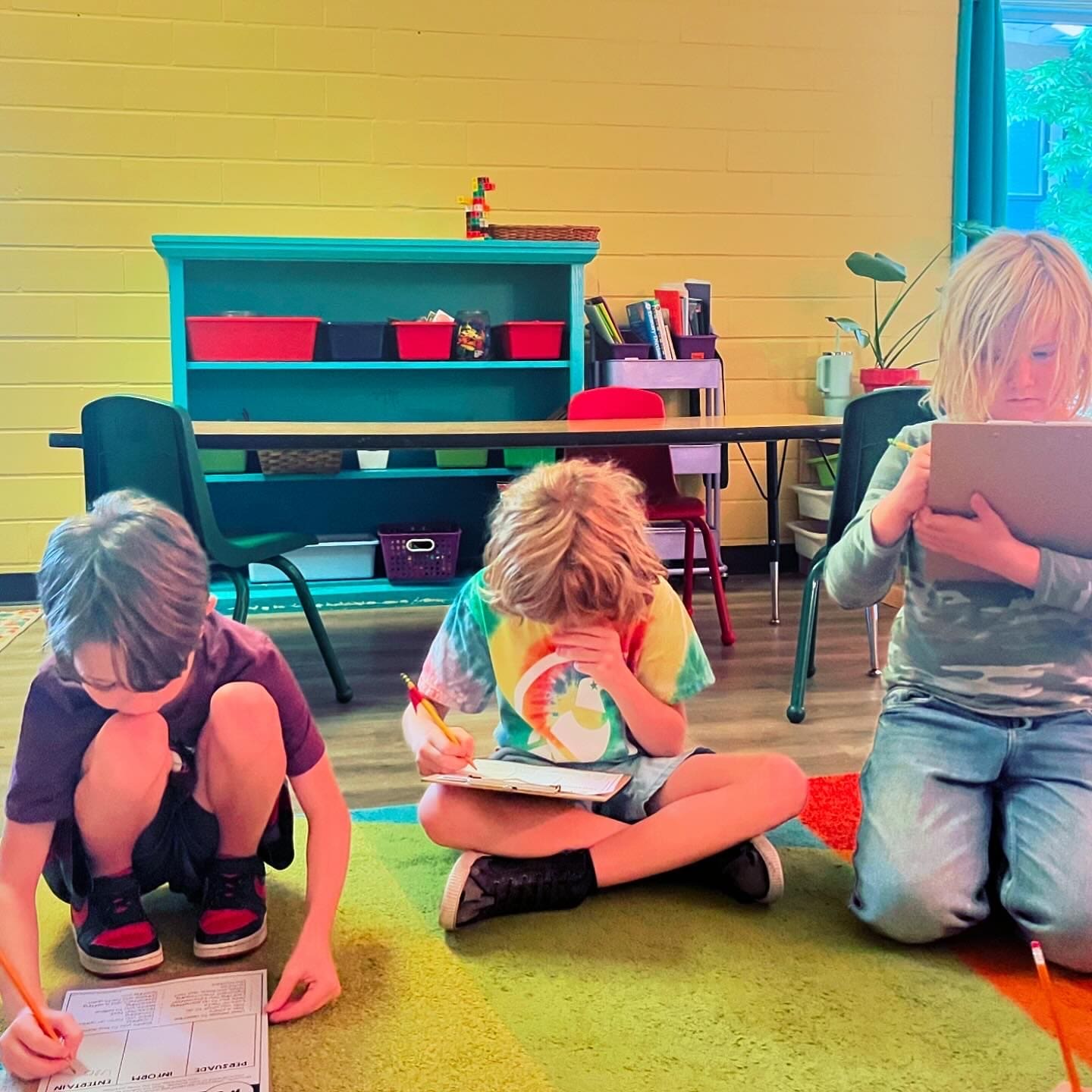 |
 |
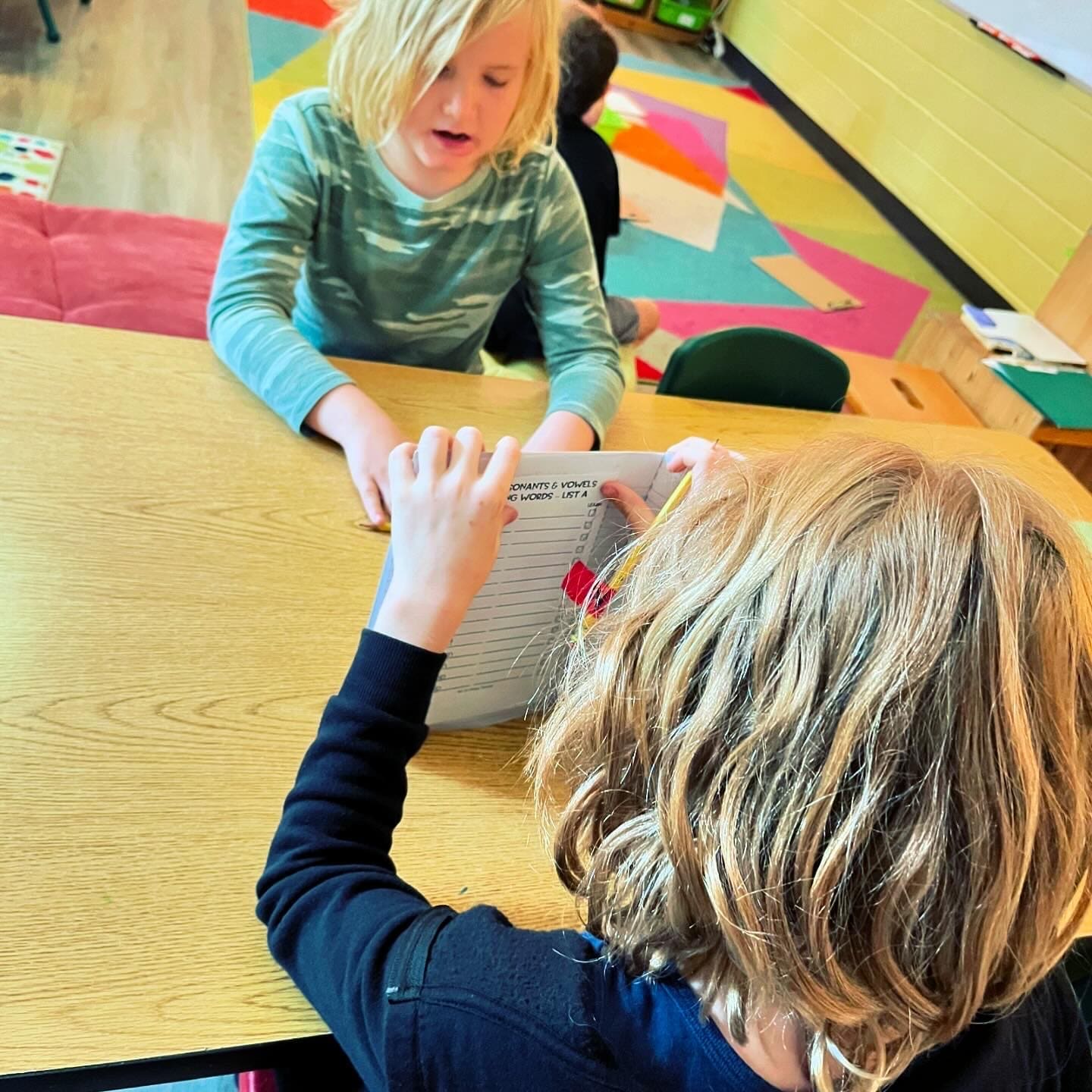 |
|---|
Writing –
We began our first unit- Personal Narrative! A personal narrative is based on your real-life personal experiences that have significant meaning for you, the writer. The experience may have resulted in learning a life lesson or gaining valuable insight, or it may just be something small and simple but it really sticks with you! Either way, a personal narrative has a narrow, clearly defined focus.
We started our discovery of this genre by reading several personal narrative picture books to get the feel of a small personal moment before thinking about our own experiences. We created a heart map and recorded important things from our life- the people, trips, experiences, etc.
After rereading a personal narrative picture book from earlier in the week titled Fireflies (A beautiful example of a small and simple moment in the narrator’s life with rich sensory details and emotions.) the kids helped to analyze the story and we jotted down these important elements as a group before we began writing about our own sensory details and emotions. We created a road map or sorts to help us guide our writing. Graphic organizers help us make a plan and keep us organized as we write. We chose a special moment, wrote the basics of a beginning/ middle/end and added any sensory details and emotions felt in that moment. What a fantastic start!
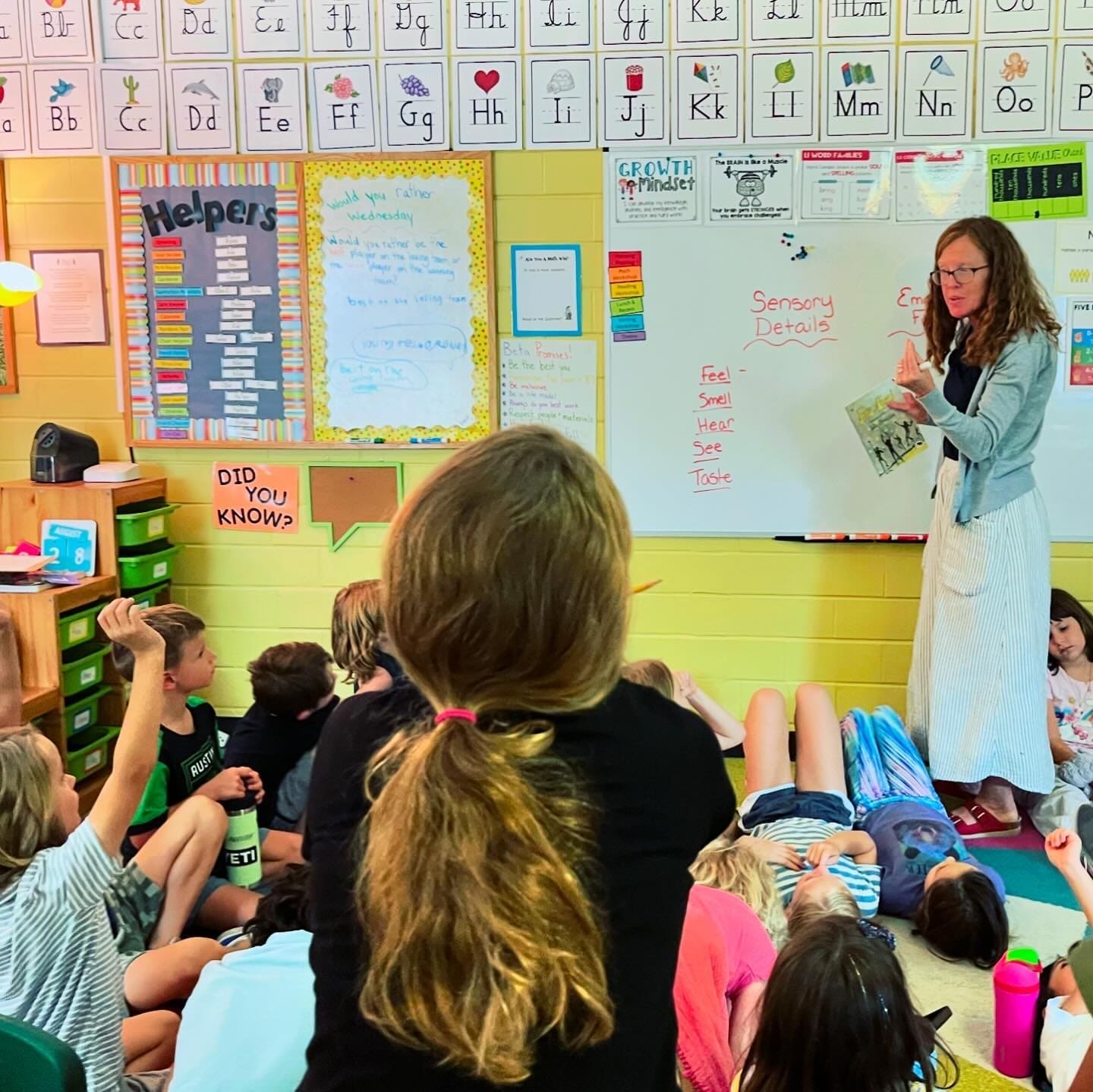 |
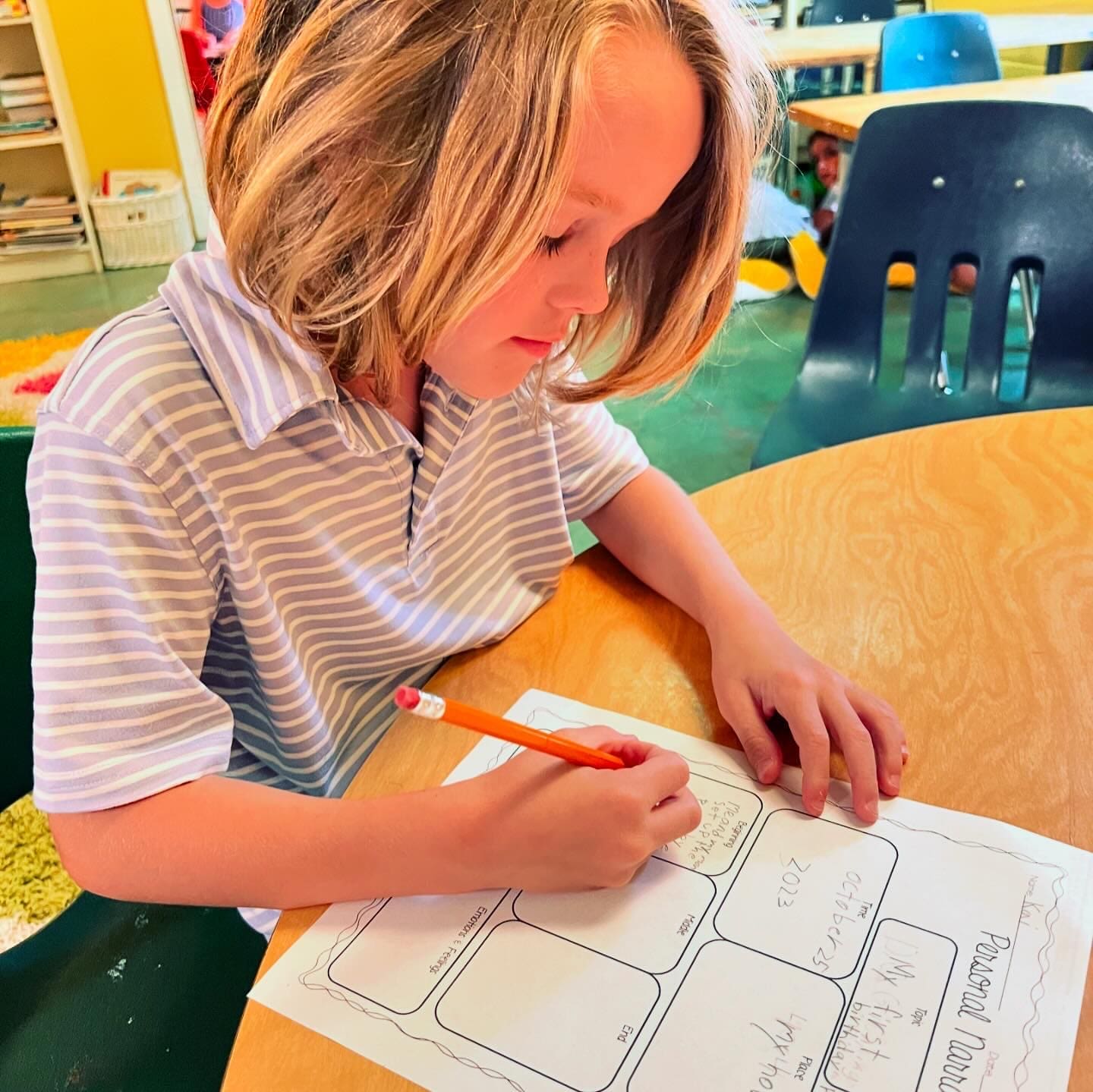 |
 |
|---|
Theme –
We began the week by designing & creating tracks for a magnetic object to maneuver. A race car around a track, a scuba diver navigating the ocean, a butterfly flitting from flower to flower- imaginations ran wild!
We reviewed our knowledge of north & south poles, which ones attract each other and which repel. Then we set off doing two investigations: for one the Betas measured & recorded the proximity required of a paperclip and a bar magnet in order for the paperclip to be pulled towards it. We tested several distances and drew conclusions based on our observations. For the other investigation we tried putting north and south ends on bar magnets together in various combinations and recorded our results.
We also made our way through 4 stations to complete pages of a flip book about magnets. Collectively, the book reviewed many of the concepts we’ve learned about magnets, such as what they’re made out of, attracted to, used for in everyday life, and their poles.
At the end of the week we created our own magnetic dancing peg dolls! We adhered a magnet to their base, decorated and dressed them – even gave them hair! Then we made them dance on whiteboards by directing them with a magnetic wand below. For our final magnetic investigation we aimed to determine whether the number of times we stroked a nail against a magnet would increase the nail’s magnetic power. We attached the nails to a string to create a fishing pole and used them to pick up (paperclip) fish. Our results were not very satisfying – we had a heck of a time magnetizing our fishing poles! But, we learned that sometimes happens with science, and we brainstormed ways to improve the experiment for the future.
 |
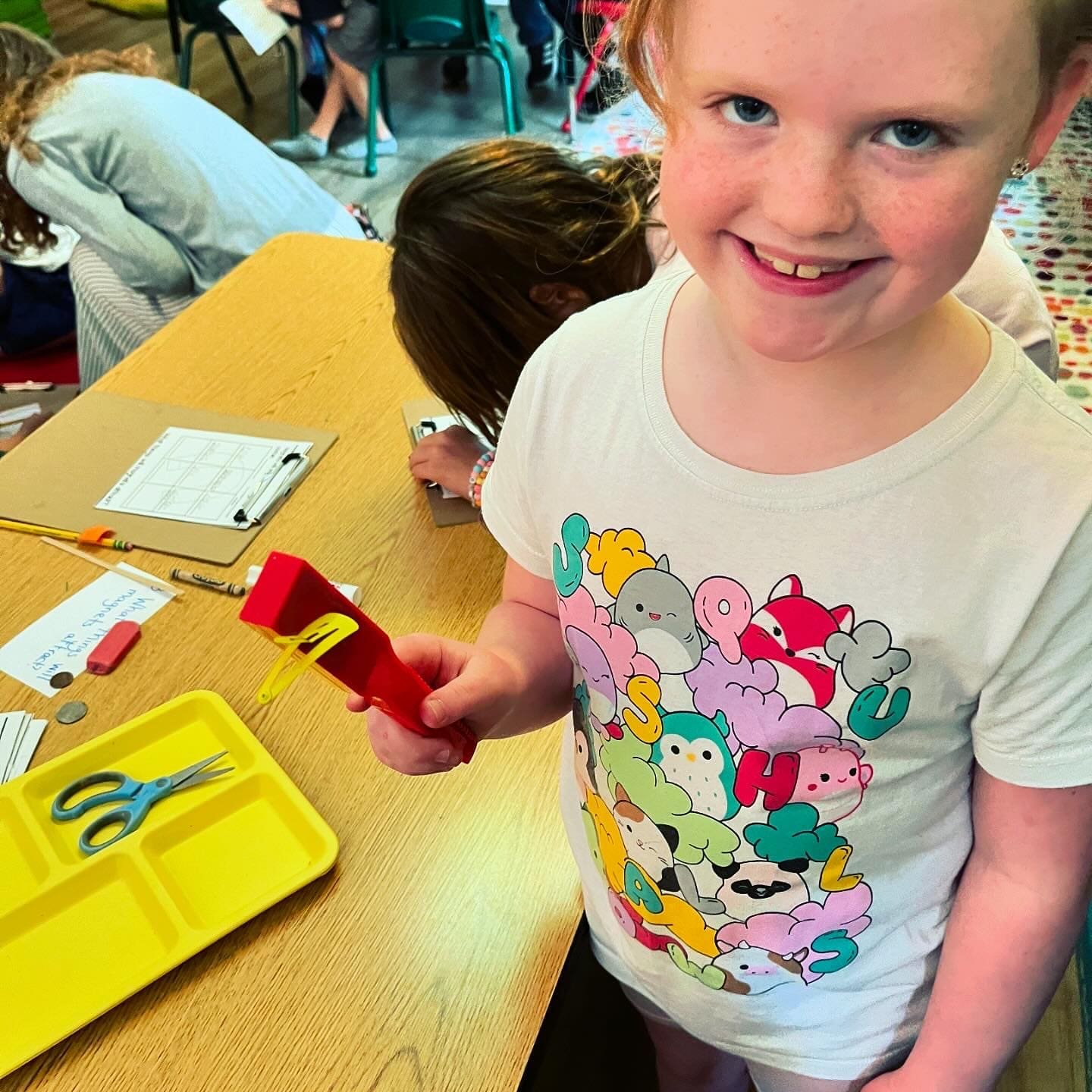 |
 |
|---|---|---|
 |
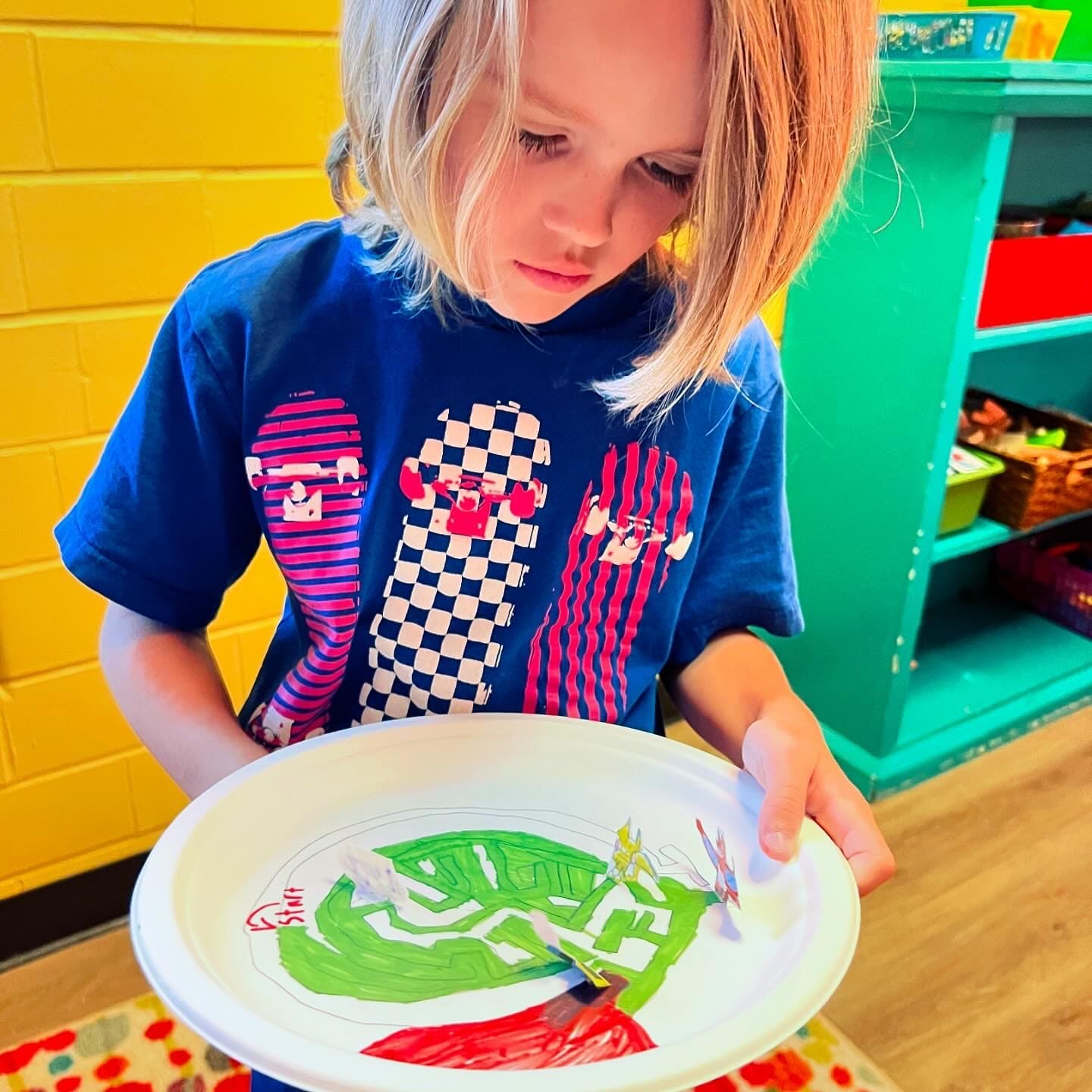 |
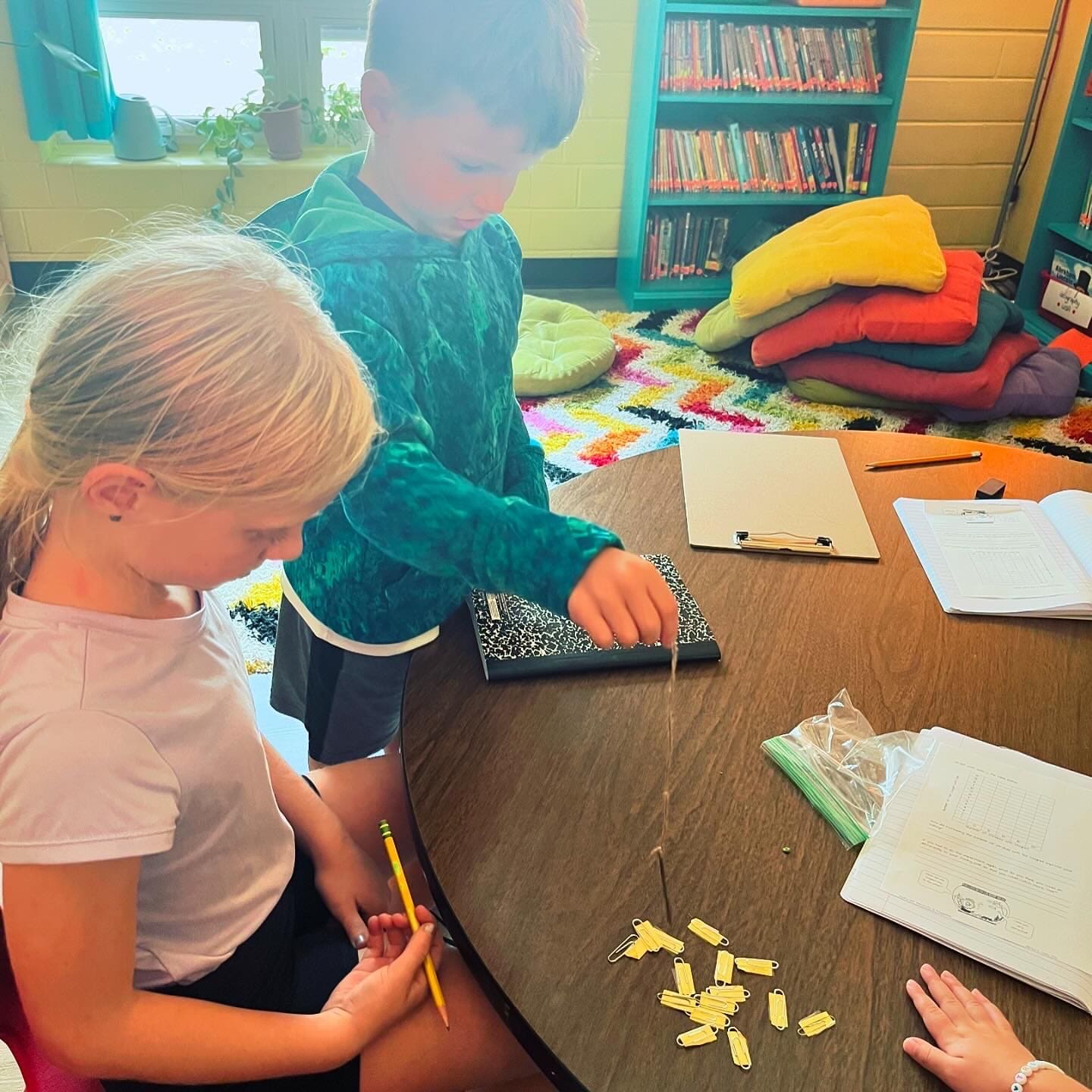 |

